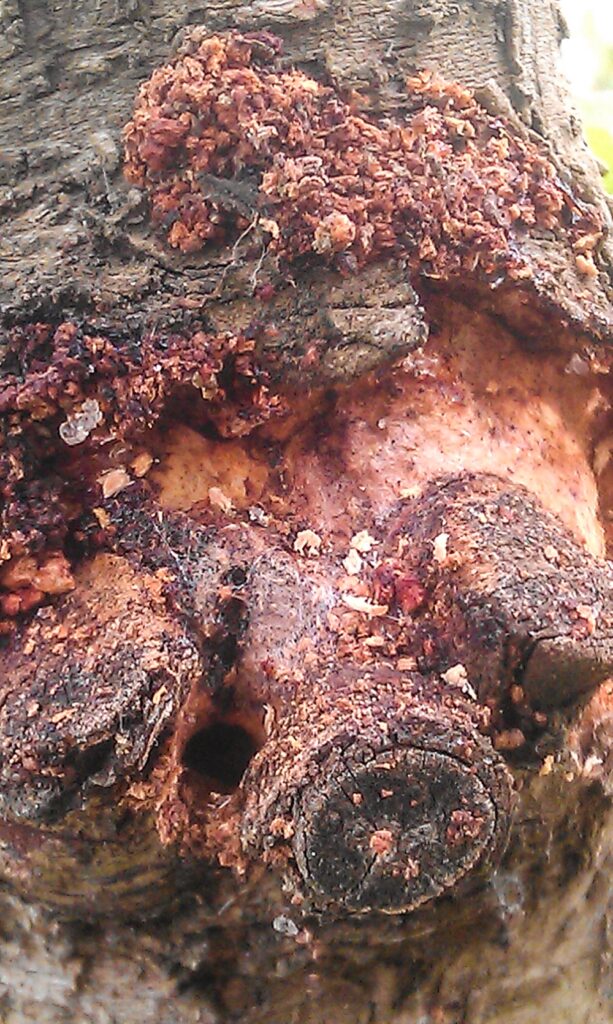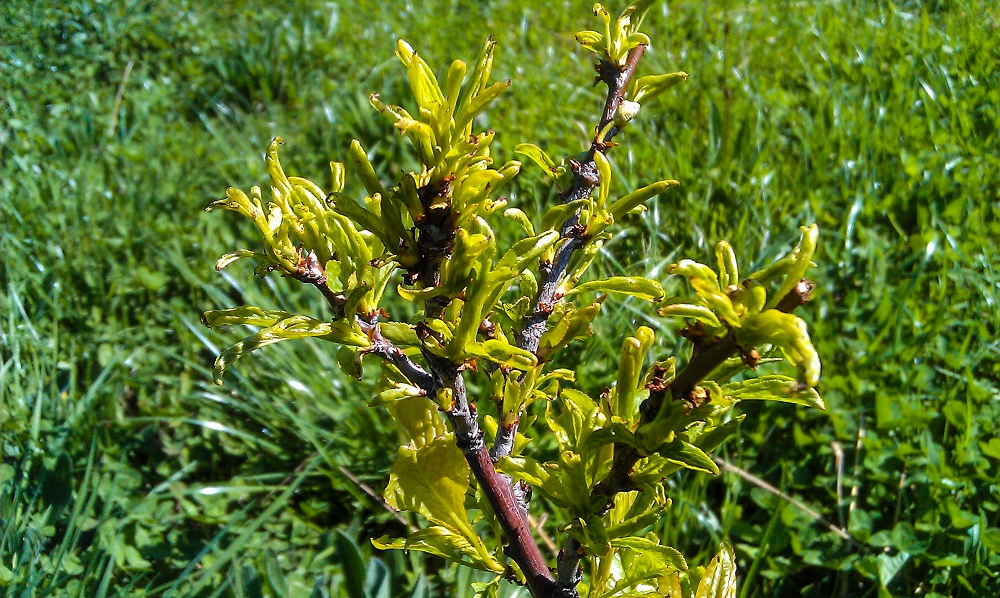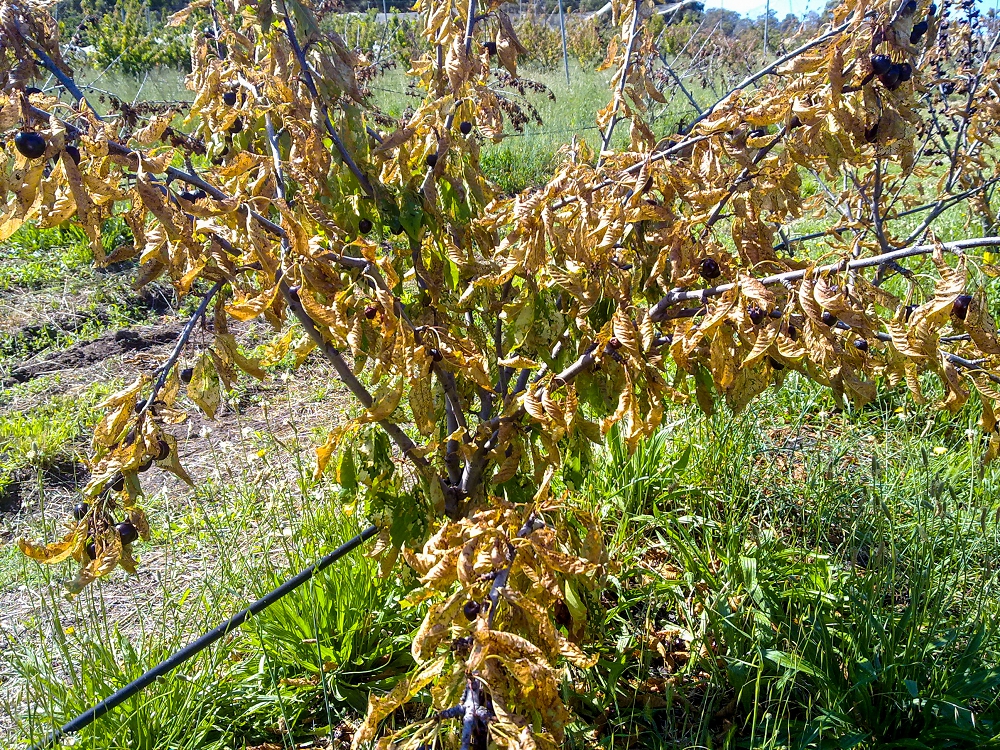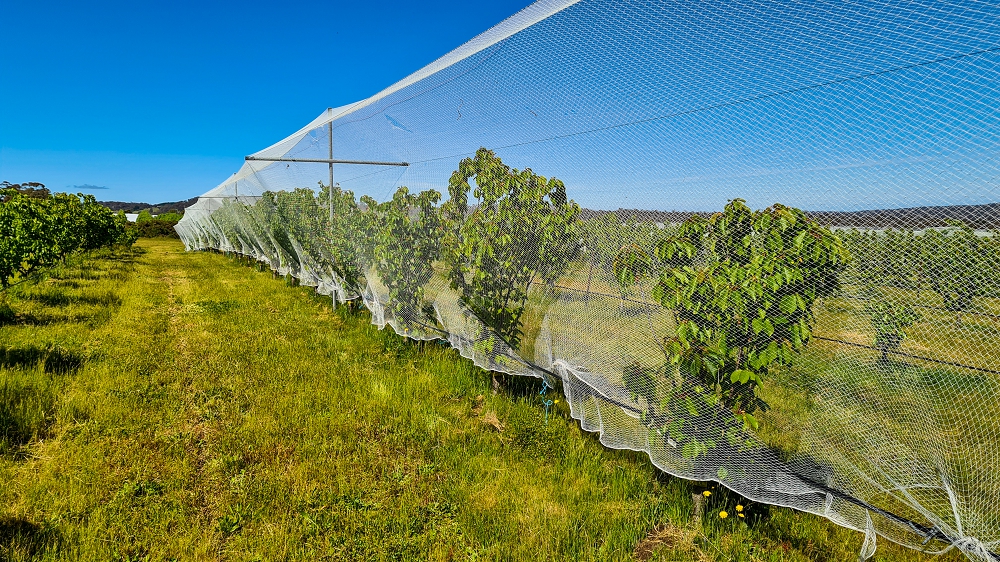Estimated reading time: 7 minutes
Occasionally, a fruit tree needs to be replaced or replanted. A tree might have died, or become so sick you decide to pull it out.
You might have planted the tree in the wrong place. Or you might decide you’d prefer a different variety in that spot.
But just because you have to pull out your old apricot tree (for example) doesn’t mean you don’t want apricots. You’re definitely going to want to plant another apricot tree, right?
So, is it OK to replant the new tree in the same spot?
Well, it depends.

What can happen when you replant fruit trees in the same spot?
Replanting the same type of tree in the same spot in your garden can sometimes lead to a problem called replant disease.
It’s not a specific disease caused by a single organism. Rather, the term refers to a range of problems that can occur when you replace a tree with the same type of tree. It’s sometimes called ‘sick soil syndrome’.
Here’s what can happen if you get replant disease:
- Trees can struggle to get started;
- Sometimes they grow poorly or end up stunted;
- Roots can turn black, grow weakly, or die at the tips;
- At worst, the plants can die.
The good news is, that it doesn’t happen to every fruit tree. The bad news is that it can affect apples, cherries, citrus, peaches, pears, plums, and quinces (so, most common fruit trees!).
Causes of replant disease
Replant disease is also a familiar issue in vegetable gardens. Most gardeners have heard that they shouldn’t plant their tomatoes in the same spot each year, though many people are not sure exactly why.
With vegies, the solution is relatively easy. You practice crop rotation, which means planting your tomatoes (and all your other vegies) in a different spot each year.
And that gives a clue as to the cause.
Replant disease is caused by a buildup of pathogens or disease-causing organisms in the soil around the roots of the plant. It’s particularly likely to happen in poor soils, or if the previous tree has died from root disease.
Nematodes are the most well-known organism to cause replant disease. But bacteria, fungi, and viruses can all cause problems. The symptoms may be caused by a single organism, or a complex mix of microbes.
Different species attack different types of trees.

Preventing replant disease
In a veggie garden, moving the plants each season means that the pathogens specific to each plant type don’t get a chance to build up in the soil.
Even though fruit trees aren’t moved regularly, the solution is surprisingly similar. In essence, don’t follow ‘like with like’. If you have to pull out your apricot tree and want to replant another apricot, put it in a different spot.
It’s fine to use the site where the apricot was for a different type of tree. If you plant an apple, plum, or quince in the spot, in most cases it should thrive.
However, the severity of the disease can also be influenced by other factors like general soil health. If the original tree died or failed to thrive because the soil is chronically waterlogged, for example, the poor soil conditions are likely to affect other trees planted in the same spot.
Conversely, healthy organic soil is your best defence against replant disease. Healthy soil contains billions of different micro-organisms, and many of them eat each other.
For example, apple replant disease is largely caused by root-eating nematodes. Turns out that one of the biggest threats to the disease-causing nematodes is nematode-eating nematodes. The trick is to create the right conditions in your soil to encourage these predators.
Replanting fruit trees on a large scale
Our old cherry block was one of our favourite places on the farm. There were 1,000 trees producing beautiful lush cherries, year after year.
It was hugely popular with the pick-your-own crowds and was generally a nice place to be.

That all changed during the spring and summer of 2010/2011. Central Victoria received flooding rain in October and December.
Cherry trees hate wet roots, and even though the block is on a slope, the roots were inundated for long enough to kill the entire block.
This left us with a dead cherry block, but we also had to make a few decisions.

First, we needed to decide whether to replant the cherry block. After we picked ourselves up after such a disaster, it was a pretty easy decision. Cherries had always been a big part of our farm. They brought joy to a lot of people, and they were a significant part of our income.
We needed a new cherry block!
Then we had to decide where they’d go. For all the reasons talked about above, we decided to replant the cherries in a new block, on soil that had not previously had an orchard. Fresh ground seemed like the safest way to go.

Finding the right place in your garden for each variety
It took us a few years to dispose of the old trees, grow the trees for the new block, and get them planted. But it’s so nice to have a cherry block on the farm again that it’s been totally worth it.
They obviously love their new spot and are growing well.
The other decision we had to make was what to do with the vacant cherry block. Clearly, we couldn’t put cherries back on that site, so we decided to replant it with a heritage apple orchard. As so often happens, a disaster became an opportunity.
Losing a tree can be devastating, but it doesn’t have to be the end of that crop in your garden. In fact, you’ll often find that trees that previously struggled will thrive if they’re replanted in a new position.
Start fresh with a new tree in a new site, and you’ll be back in production in no time!
Related Articles
How to plant a fruit tree – the easy way
Everything you need to know about how to plant your new fruit trees to get them off to a great start in life.
How to buy a good fruit tree
Learn how to select a healthy fruit tree when you’re buying from a nursery, to give your trees the best possible start in life.
Choosing the right fruit tree to plant
Choosing the right fruit trees to plant can make a huge difference to how much food you grow and the value you get from your garden.








Thank you for your article – I am very familiar with rotation of veggies and know roses cannot be planted in the same hole but I now have a 4 year-old plum tree suffering from ‘nothing’ but dying anyway, except for one lonely branch. It just didn’t come out of dormancy but has no sign of disease or insect/virus issues. So I am facing – replant. I think after your article, I will uproot the little apple I planted a month ago and replant in the apple hole. I do need another plum because of pollination of my other plum.